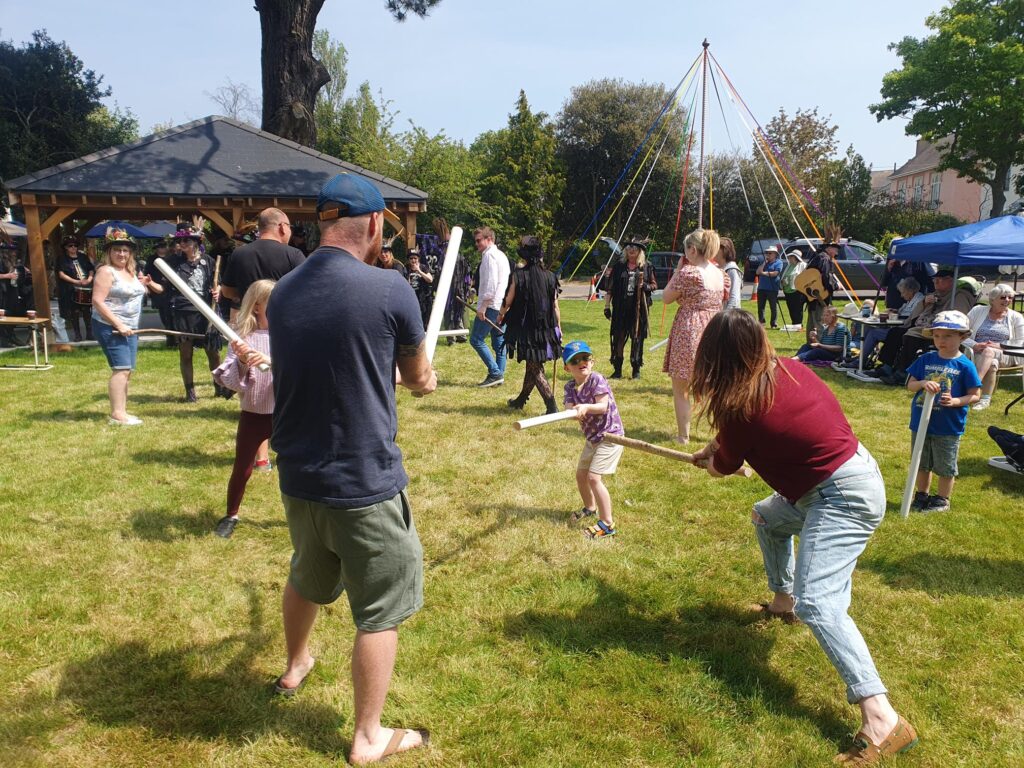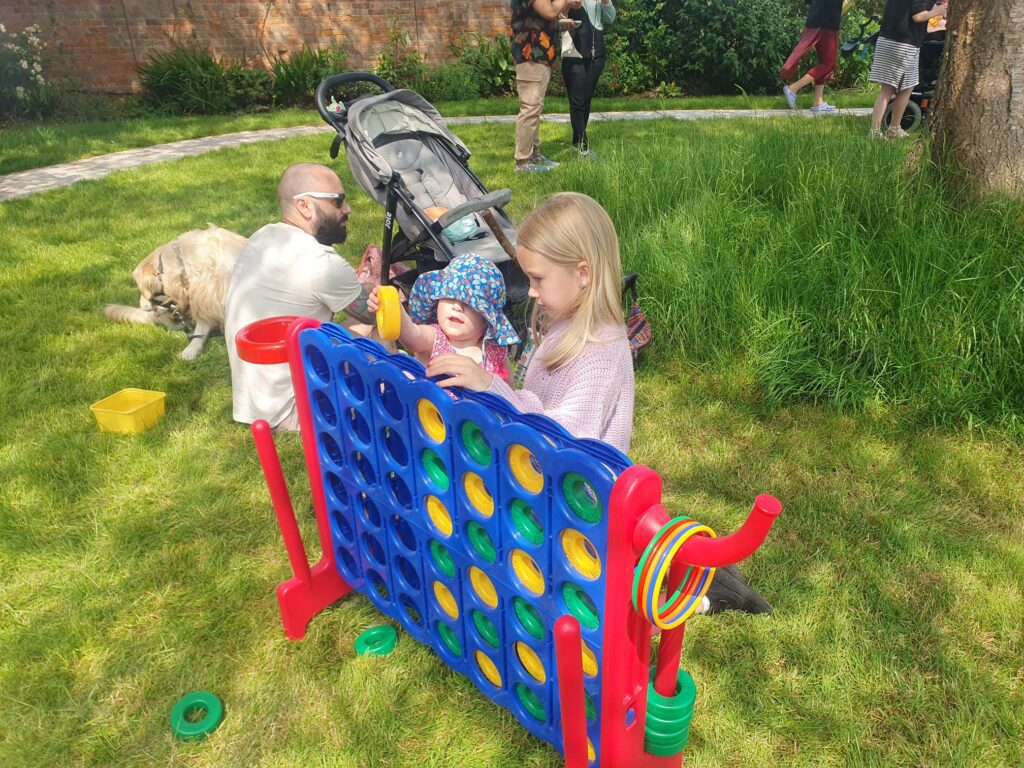There was a real family feel to the May Fayre at Seton Hall, with entertainment for residents, their families and the local community.
Traditional Morris Dancing and a Maypole were among the attractions laid out in the lovely grounds and the sun shone for the occasion.
“We had the Grimspound Border Morris Dance group from Newton Abbot, who were fantastic. Entertainer George Williams filled in the hour gap between sets. We had a barbecue and cream teas, along with other refreshments and ice creams. People living nearby could hear us and came to join in. Everyone enjoyed themselves.”
Lisa Burge, Sefton’s Social Care Coordinator
Morris Dancing is a tradition widely seen in English towns and villages to banish the dark of winter, celebrate the warmth and fertility of the crops in summer and mark autumn’s golden harvest.

The dancing features a rhythmic stamping of the feet, with performers using props including wooden sticks, swords, handkerchiefs and bells.
In accordance with modern-day health and safety rules, sharper props are often replaced with wooden spoons, especially in confined spaces! Costumes are either colourful, or black and white.
Morris Dancing was introduced to this country in the Middle Ages, but gradually died out before being revived in Victorian times.

The hobby is increasingly popular nowadays, with large mixed groups performing at a variety of events.
The Maypole has pagan origins and was used widely in Germany and other Northern European churches before it was adopted by the Christian church in this country.
The Maypole is usually associated with the idyllic images of school children plaiting ribbons in an intricate pattern, but in its earliest incarnation, the tradition was to adorn it with spring flowers, with adult dancers holding hands around the pole.
